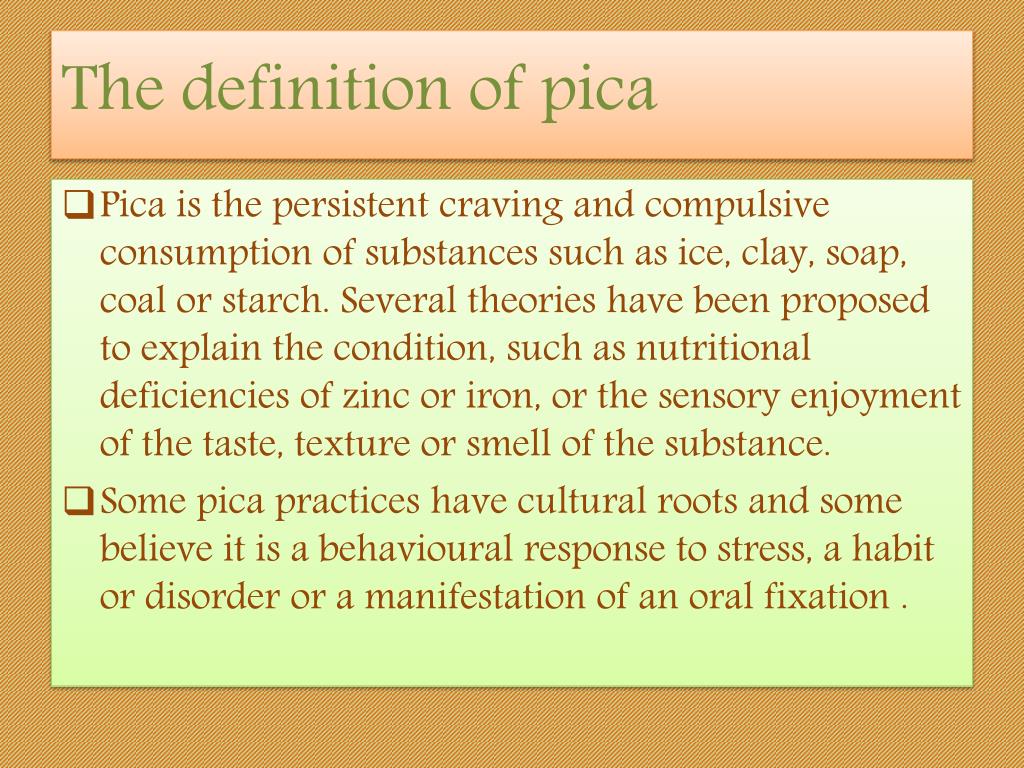


While pica can imply the consumption of a range of substances, geophagy, the consumption of earth, and amylophagy, the consumption of raw starches, are among the most common types of pica –. Pica is the craving and purposive consumption of substances not culturally defined as food. The funders had no role in study design, data collection and analysis, decision to publish, or preparation of the manuscript.Ĭompeting interests: The authors have declared that no competing interests exist. This is an open-access article distributed under the terms of the Creative Commons Attribution License, which permits unrestricted use, distribution, and reproduction in any medium, provided the original author and source are credited.įunding: This study was supported by the Margot Marsh Biodiversity Fund #023815, the National Geographic Society Conservation Trust #C135-08, and the National Science Foundation Doctoral Dissertation Improvement Grant- DEB- 1011714. Received: Accepted: SeptemPublished: October 17, 2012Ĭopyright: © Golden et al. Indiana University, United States of America Further, the prevalence of the behavior underscores the importance of understanding the etiology and health consequences of these ingestive behaviors ( Abstract S1).Ĭitation: Golden CD, Rasolofoniaina BJR, Benjamin R, Young SL (2012) Pica and Amylophagy Are Common among Malagasy Men, Women and Children. Our results suggest that population-based studies of pica should include males of all ages. However, there are two categories of substances that elevate our estimates but fall outside the strict definition of pica as a craving: 1) substances consumed for self-medication and 2) substances viewed as food, such as all amylophagic substances in this case. These findings differ from previous studies in terms of the higher overall prevalence of these behaviors, the high prevalence among men, and the absence of any peak in behaviors during pregnancy. The prevalence of these behaviors was not higher during pregnancy. Across the entire population in the prior year, the prevalence of geophagy was 53.4%, of amylophagy, 85.2%, and of other pica substances (e.g. Thirteen non-food items were reported being consumed. Of the 760 individuals interviewed, 62.5% were children (5–11 years), 5.4% were adolescents (12–16 years), and 35.1% were adults (≥17 years). From February to December 2009, we surveyed pica and amylophagy behaviors in a random sample of 760 individuals >5 years in 167 households among two ethnic groups in 16 villages in the Makira Protected Area of Madagascar. Therefore, we conducted the first population-based study of pica and amylophagy in Madagascar. However, neither its prevalence nor demographic correlates have been well characterized. Pica, the craving and purposive consumption of non-food substances, is of public health concern for its potential deleterious and salubrious health consequences.


 0 kommentar(er)
0 kommentar(er)
